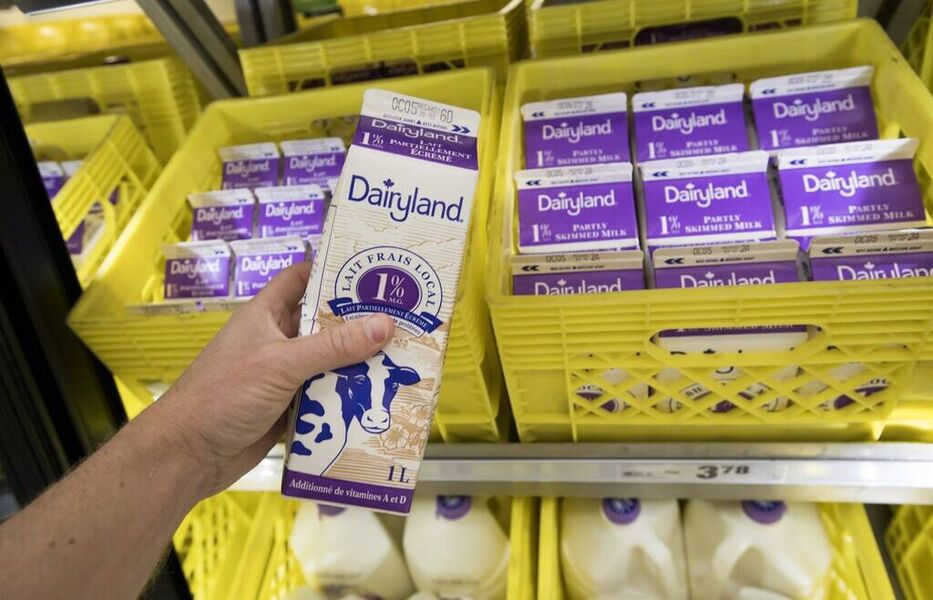It wasn’t a second-round draft flyer making game-clinching defensive plays for the Miami Heat on Wednesday night. It was undrafted free agent Max Strus.
It wasn’t a first-round choice on his rookie extension making his first All-Star appearance for the Toronto Raptors this season. It was undrafted free agent Fred VanVleet.
It wasn’t a former first-round pick scoring 6 points in crunch time of the Milwaukee Bucks’ Game 6 victory to win last season’s NBA Finals. It was second-round pick and former G-Leaguer Khris Middleton.
Those growth-stock contributions represent 3 different organizations bound by one common characteristic — they don’t let the diamonds land in their laps; they go mining for the diamonds.
As much as the national sports commentators (and some of the local baiters) enjoy running their victory laps over The Process, there was nothing wrong with building teams incapable of winning for nearly 4 years. In fact, small-market teams have been doing it for years, much to the chagrin of absolutely no one.
The irony, given all the second-round draft picks accumulated and undrafted free agents signed by former General Manager Sam Hinkie, is that the central post-Process failure has been the Philadelphia 76ers’ total negligence of young, cost-effective depth.
The Sixers don’t bet on youth, size, and athleticism to round out their team beyond its central figures. Rather, they bet on their wallets and high-level draft picks to build a roster that goes 8 players deep.
The risk in that is even the slightest imperfection at the top can ruin everything. One of those expensive players failing to perform up to expectations is not enough to overcome the shallowness down the roster.
Because when you have to use Mid-Level Exceptions and minimum deals on past-expiration veterans to fill out your roster beyond its max-contract pillars, you have a major roster imbalance.
Time will tell whether the current iteration can surpass its own postseason barriers — some self-created, some not.
If the Sixers can’t, it’s time to re-assess the program that has taken them to the exact ceiling they reached before the days of Hinkie.
.
Nick Jacobs: Evaluating Chiefs cornerbacks, safeties
KANSAS CITY, Mo. — Most NFL front offices keep trajectories on players from the beginning through the end of the season. That evaluation includes grades from week-to-week or scouting reports on their improvement. Over the next week, “4th & 1” podcast analyst Nick Jacobs will break down each position on the Chiefs’ roster and where each player from 2021 is in their NFL career.Here is a look at the secondary:CornerbacksL’Jarius Sneed
Coming off another strong season, L’Jarius Sneed is arguably the best defender the Chiefs have on their roster. He is at his best when playing on the inside, where Sneed is great in run support and tackling in the open field. He is also a good blitzer when he is allowed to attack. Sneed does have some hiccups at corner on the outside, which might be fixed with snaps on the outside, but there is still a ton of untapped potential in his game.Rashad Fenton
A former sixth-round pick from South Carolina, Rashad Fenton will struggle with some of the premiere athletes in the league, like Cincinnati’s Ja’Marr Chase, because of his inability outleap them for the jump ball.He also can have trouble at times tracking the ball or is fearful of losing his position if he does. Fenton is at his best in zone coverage, which allows him to read the play and drive on the football or work against a receiver over the middle on a dig, slant or crossing route. The vertical routes are when Fenton can find trouble trying to stick with a fast receiver and not turning back to find the ball, which can cause him to lose position.Charvarius Ward
Charvarius Ward is an above average corner that fits the scheme perfectly. He has issues when he misses on a couple of plays and lets it get into his head. You can see his confidence drop on coaches’ film and more errors can compound at times. Ward went up against Chase in two separate games and put himself in good position both times. His biggest issue comes when he must keep pace with the receiver and can’t turn his head around to find the football. He will panic a little bit and give up the play, because he is worried about keeping good leverage.Mike Hughes
Acquired via trade with Minnesota for a seventh-round pick, Mike Hughes has premium athletic ability and could be a great returner in the NFL, but he struggles at corner. Nearly five years into his career, it may not get any better. He gives up position, must play catch up far too often and can be easily faked out with double moves. It was worth a try by the Chiefs, but unfortunately it just isn’t a good fit defensively.Deandre Baker
Drafted in the first round from Georgia by the New York Giants in 2019, Deandre Baker looks like he still might be getting over his broken leg a year later. He has good athletic ability, but his inability to get snaps on field indicate the coaches aren’t seeing what they need from him responsibility-wise in practice to play — or there is a lingering injury.Chris Lammons
Chris Lammons is a good gunner on special teams and a strong special-teams starter, but there just isn’t enough at corner to warrant a developmental spot on the active 53-man roster.Outlook: The cornerback position needs an infusion of youth through the draft. The team will need to find some premium athletes who have good straight-line speed on vertical routes and an ability to outleap their opponents on jump balls. The coaching staff has shown the ability to coach the rest.SafetiesTyrann Mathieu
Veteran safety Tyrann Mathieu — The Honey Badger, The Landlord, the Chiefs’ Walter Payton Man of the Year winner for 2021 — was brought in to be one of the leaders of the defense. He was able to help this team get over the hump and win a championship. Mathieu is arguably the best safety the Chiefs have and most talented member of their secondary outside of Sneed. The main issue is that Mathieu seems to make some business decisions at times that send a poor message to the rest of the roster. He might be injured some of those times, but allowing the offensive player to score when he could have made a tackle or had the angle just isn’t what this defense needs to lead them. If he does return on a new contract, Mathieu has to sell out for this team on the field every play.Juan Thornhill
Two years removed from a torn ACL, Juan Thornhill still doesn’t show the same range at the free-safety position that he did his rookie year. That is cause for concern in my book. He can come downhill in a straight line, but the ability to open, turn and run to close the angle still doesn’t appear to be there from a lateral perspective. Thornhill can be serviceable in two-deep coverages, but he becomes a liability in single-high looks. The tragic thing, with respect to his NFL career, is that he may never regain his rookie form.Daniel Sorensen
“Dirty” Dan Sorensen gave this organization and fan base all the ability he had. He loved football and making big hits. He was never a premium athlete, but he was always willing to push himself physically and mentally to be in good position. During the 2021 season, Sorenson’s athletic ability fell off the cliff. He can no longer make up for an error with his athletic ability. Father Time has caught up with him.Armani Watts
Veteran backup Armani Watts is a solid special teams performer. He can make a career out of that alone, but Watts still doesn’t appear to still have a good grasp on zone coverage four years into his career. The former Texas A&M star originally showcased as a physical, downhill, run-support strong safety with good acceleration and closing speed to go with it. It just never translated into a player the Chiefs could rely on in their defensive scheme.Outlook: The Chiefs probably need to invest heavily in safety through free agency and the draft. They will need to prioritize speed, the ability to track the ball, versatility, quick processing when diagnosing route combinations, and range. The position might need a complete overhaul.This was final evaluation in the series. The next series will pick up with potential free agents who fit the Chiefs’ needs.Additional Chiefs roster evaluationsFeb. 10 | Nick Jacobs: Evaluating Chiefs quarterbacks, running backs
Feb. 11 | Nick Jacobs: Evaluating Chiefs wide receivers, tight ends
Feb. 12 | Nick Jacobs: Evaluating Chiefs offensive linemen
Feb. 13 | Nick Jacobs: Evaluating Chiefs defensive linemen
Feb. 14 | Nick Jacobs: Evaluating Chiefs linebackersMore Chiefs offseason analysisRELATED | Nick Jacobs: 5 ways for Chiefs to create cap space in 2022
RELATED | Nick Jacobs: Assessing Chiefs’ biggest team needs for 2022
RELATED | Expect Chiefs to be more active in free agency in 2022
window.fbAsyncInit = function() {
FB.init({
appId : ‘1557642287829215’,
xfbml : true,
version : ‘v2.9’
});
};
(function(d, s, id){
var js, fjs = d.getElementsByTagName(s)[0];
if (d.getElementById(id)) {return;}
js = d.createElement(s); js.id = id;
js.src = “//connect.facebook.net/en_US/sdk.js”;
js.async = true;
fjs.parentNode.insertBefore(js, fjs);
}(document, ‘script’, ‘facebook-jssdk’));
.
Paying a premium for ‘white gold’
Opinion
Canadians love for dairy products is about to be put to the test, since the prices of most of those products are about to rise significantly.
It goes without saying that milk and cream are important parts of our diet. And cheese, yogurt and butter are cherished by many people. But the average household will now be forced to spend between 10 and 15 per cent of their food budget on them.
Last fall, the Canadian Dairy Commission recommended an increase of at least 8.4 per cent on the price of milk paid to producers. For butter, the increase will exceed 12 per cent. This is the largest increase announced by the commission in more than 50 years, almost double the previous record.
Under Canadas supply-management system, the Crown corporation must identify more than 200 dairy producers annually to determine the real costs of production on the farm. Once the data is collected, its averaged and used to determine a fair and equitable income for dairy producers.
This simple process is marred with anomalies and secrets.
Few people know exactly where the figures presented come from, let alone what the commission does. Even many dairy farmers have no idea how the commission works. This Crown corporation, owned by all Canadians, is managed by two or three people affiliated with the dairy industry, and it employs more than 80 people.
Its very public mandate gives it the power to influence food affordability in Canada, at least for dairy products. For this, the commission obviously has a duty of transparency. But it fails to fulfil this duty every year, since the commissioners make decisions without necessarily presenting those decisions and the process clearly and in detail to the public.
The commission and the Dairy Farmers of Canada are simply one and the same – and they shouldnt be.
Last fall, the commission made an amazingly brief statement on rising production costs. But it didnt share any details that would justify such an increase. It never does.
Moreover, the commission didnt share the news about the increase widely. The media had to get involved to make the hike known to the public. Without fanfare, the commission simply posted a 300-word text on its web page – a page few people consult. The phone number shown on its website is also out of service and has been for months.
The commissioners hide behind contracts that ensure the anonymity of dairy producers. Its a silly argument since, in research, its always possible to disclose figures by hiding the identity of the participants in a survey. This has always been done, but the commission refuses to share its primary data, arguing that it needs to protect the anonymity of participating farms.
Unlike other food products, milk is nothing less than a public good because of the state-sanctioned public quota regime. So unlike other commodities and food products, the level of accountability related to milk must be upheld.
This increase will force some processing companies to raise their prices. Before the holiday season, the big firm in the dairy sector, Lactalis Canada, announced it was raising its prices by 15 per cent to its customers – the food retailers from whom we buy our dairy products.
Weve heard some retailers are refusing to pay more, in order to remain competitive. Consequently, two things can happen:
Some processors may simply stop selling some dairy products since they cant make a profit. If this happens, expect more unreported milk dumping in rural communities. The Dairy Farmers of Canada will never want the public to know about this practice.
Or dairy processors will simply start unlawfully importing dairy proteins from the U.S., where industrial milk is three times cheaper.
Both scenarios will lead to more dairy farms disappearing, and that will be a disaster.
Want to get a head start on your day?
Get the day’s breaking stories, weather forecast, and more sent straight to your inbox every weekday morning.
Sign up for Head Start

Meanwhile, a Canada-United States-Mexico Agreement tribunal recently ruled Canada is unfairly blocking the entry of certain dairy products destined for our market.
Apparently, import quotas offered by the federal government were granted to companies linked to Canadian dairy. These organizations are obviously not motivated to import products from elsewhere. Prices and market shares for their own products could drop. In other words, Canada got caught cheating on the Americans.
Meanwhile, Canadian taxpayers are paying nearly $2 billion (almost $200,000 per farm) in compensation to dairy farmers for lost market share as a result of more foreign products coming into Canada. But barely anything is coming in – what a racket.
The federal governments hypocrisy regarding dairy is costing all Canadians, both as consumers and taxpayers. The lack of transparency to better serve the public is more painfully obvious by the day.
That means Canadians will keep paying more for this white gold at the store, all the while subsidizing dairy farmers without really knowing why.
Sylvain Charlebois is senior director of the agri-food analytics lab and a professor in food distribution and policy at Dalhousie University.
.






